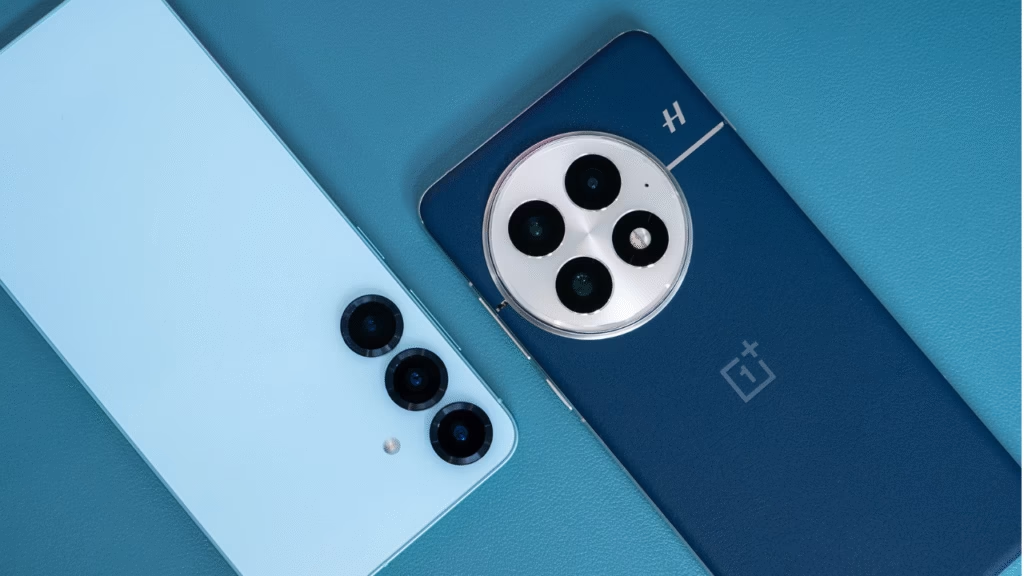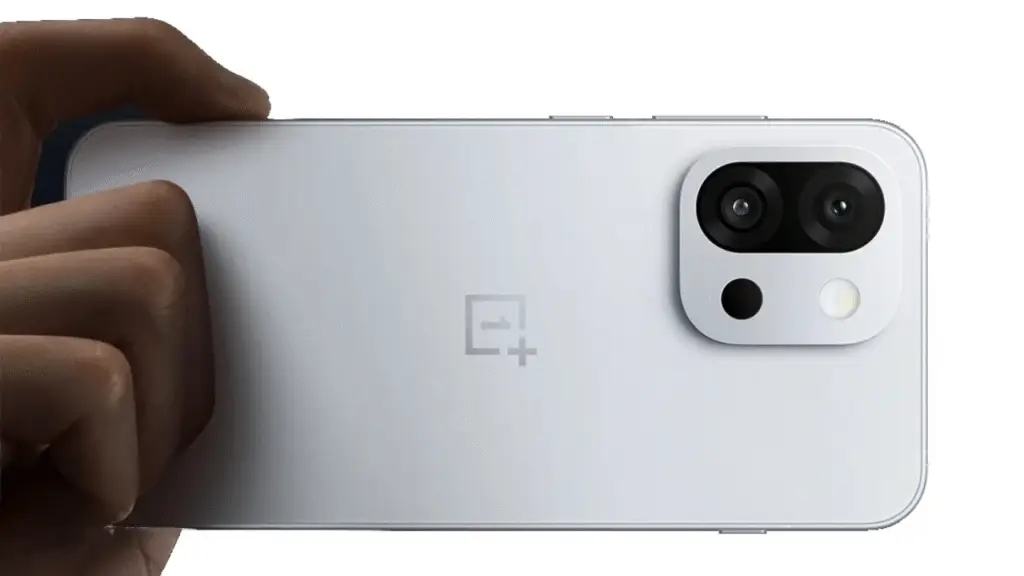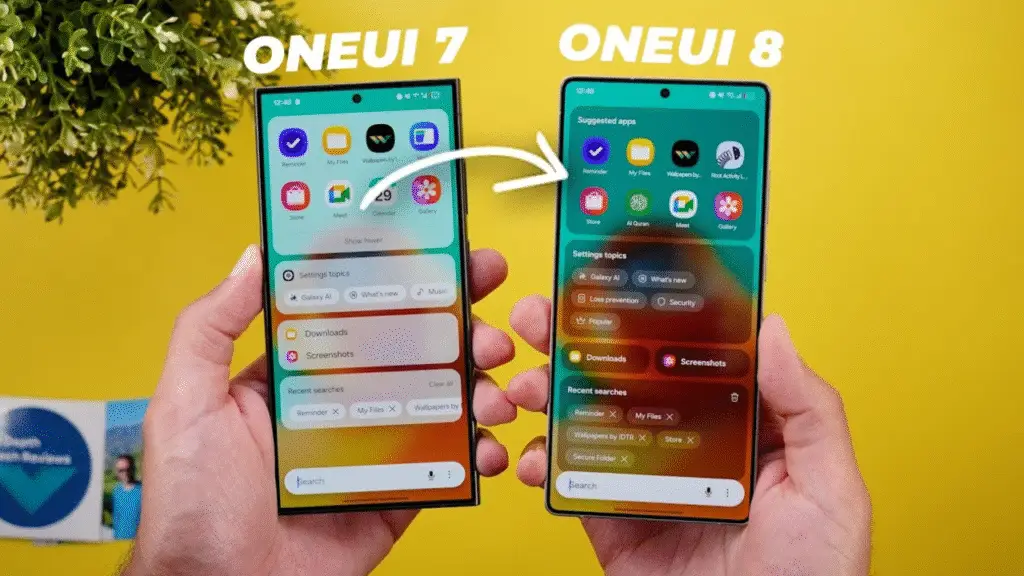
In the world of premium smartphones, “fair comparisons” are easier said than done. Every year, brands push out new models with promises of innovation, but often they fall into the same rhythm of incremental updates. The OnePlus 13 vs S25 Plus match-up isn’t exactly an apples-to-apples battle yet it’s one of the most interesting face-offs of 2025.
OnePlus has built a reputation on shaking up the market by delivering flagship-tier specs without the flagship price tag. Samsung, on the other hand, has decades of dominance, polished software, and a loyal user base. The S25 Plus represents Samsung’s refined approach: a premium build, balanced performance, and the prestige of its brand. But the OnePlus 13 comes in swinging with higher numbers in some key areas and at $100 less.
So, how do they really compare in design, display, performance, battery, software, and camera capabilities? Let’s break it down.
Design & Build Quality
At first glance, both devices are stunning examples of modern flagship craftsmanship. The S25 Plus opts for Samsung’s familiar clean lines, slim profile, and premium glass-and-metal combination. It’s slightly lighter and thinner than the OnePlus 13, which may appeal to those who prefer a sleeker hand feel.
The OnePlus 13 is bolder in its design choices. The camera bump is centrally aligned, minimizing the table wobble that many phones suffer from. It’s a bit taller, wider, and heavier, but this extra bulk houses a larger battery and improved cooling systems. OnePlus also gives you the option of a vegan leather finish, which not only feels luxurious but eliminates a rear glass panel one less thing to shatter if you drop your phone.
Both have aluminum frames, but OnePlus takes durability a step further with ceramic guard glass on the front, which is tougher than the Gorilla Glass Victus 2 on Samsung’s model. In short, Samsung wins on lightness and ergonomics, while OnePlus edges ahead on ruggedness and finish variety.
Display Showdown
Samsung’s Dynamic AMOLED 2X display has long been the benchmark for smartphone screens, and the S25 Plus continues that legacy with vibrant colors, deep blacks, and a smooth 120Hz refresh rate. However, OnePlus has made a serious leap forward here.
The OnePlus 13 features a next-gen LTPO 4.1 AMOLED panel, supporting Dolby Vision, a billion colors, and a peak brightness of up to 4500 nits, nearly double what the S25 Plus can achieve. This makes it exceptionally readable even under harsh sunlight. Samsung does still maintain a slight lead in pixel density and screen-to-body ratio, but in terms of sheer HDR impact and brightness, OnePlus takes the crown.
Performance & Hardware
Both phones are powered by Qualcomm’s Snapdragon 8 Elite chipset, but Samsung has tuned its version with slightly higher clock speeds. In day-to-day use, this difference is subtle unless you’re pushing the phones with heavy workloads or gaming for long periods.
RAM and storage options start the same for both, but OnePlus offers higher-capacity models, ideal for power users. The OnePlus 13 also boasts a higher water resistance rating, a bigger battery, and much faster charging both wired and wireless. In fact, OnePlus includes a high-wattage charger in the box, something Samsung no longer does.
If charging speed and battery size matter to you, OnePlus has a clear edge. Samsung’s small clock speed advantage will only appeal to the most performance-obsessed users.
Software & User Experience
Here’s where personal preference comes into play. The S25 Plus runs One UI 7 over Android 15, loaded with Samsung’s ecosystem features and AI integration. Samsung positions AI as a core selling point, with tools for productivity, photography, and personalization baked right in. Features like the side-panel shortcuts, intelligent search, and adaptive AI agents give Samsung’s software a polished feel.
The OnePlus 13 ships with OxygenOS 15, also based on Android 15. It’s lighter, faster, and more minimalistic, though its AI tools are more supplementary than central. Customization is excellent, though some elementslike widget sizingcan still be clunky.
In terms of speed, both are fluid and responsive. Samsung gets the nod for AI depth, but OnePlus feels cleaner and more efficient for users who prefer minimal bloat.
Battery Life & Charging
This is one area where the OnePlus 13 runs away with the win. Its massive battery, combined with aggressive software optimizations, easily stretches to two full days for moderate users. Samsung’s S25 Plus will last you a day and a half at most, which is still good, but not quite as impressive.
The charging story widens the gap. OnePlus offers incredibly fast wired and wireless charging speeds and you get the necessary adapter in the box. Samsung’s charging is slower and requires you to purchase a fast charger separately. For travelers and heavy users, the OnePlus advantage here is undeniable.
Camera Systems
Historically, Samsung has dominated camera comparisons thanks to consistent tuning and versatility. But 2025 has changed the game.
The OnePlus 13’s camera system, tuned in partnership with Hasselblad, now competes directly with the best. Photos have warmer tones, broader dynamic range, and more pleasing contrast straight out of the camera perfect for users who want social-media-ready shots without editing.
Samsung’s output is more neutral, giving more flexibility for editing later. The S25 Plus holds its own in zoom performance, but its sensors and optics can’t quite match OnePlus’s in sheer capability. Low-light shots, ultra-wide photos, and portraits all come out ahead on the OnePlus side.
The exception is video from the front camera. Here, the S25 Plus delivers better exposure control and dynamic range, especially in challenging lighting. For vloggers or those who prioritize video calls, this may tip the scales.
Real-World Use
Numbers and specs are one thing, but living with a phone every day tells the real story. Using both side by side, the OnePlus 13 feels like a device designed to impress power users without sacrificing general usability. The combination of battery longevity, fast charging, bright display, and camera performance makes it an easy daily driver.
The S25 Plus feels refined, polished, and reliable. It may not match OnePlus in raw hardware advantages, but its AI integration, slimmer profile, and software ecosystem make it an equally compelling choice especially for those already invested in Samsung’s devices.
Verdict: Which Should You Buy?
If you value maximum hardware for your money, the OnePlus 13 is the clear winner. It’s $100 cheaper than the S25 Plus yet offers a brighter display, larger battery, faster charging, tougher glass, and arguably better photography. This isn’t just “good for the price”, it’s outright competitive with, and in some cases superior to, Samsung’s offering.
The S25 Plus still has its audience. Its software polish, AI integration, and slightly lighter, slimmer build will appeal to many. And for those who shoot a lot of selfie video or prefer a more neutral photo profile for editing, Samsung remains a solid bet.
In 2025, OnePlus isn’t just the disruptor anymore, it’s a full-fledged flagship leader. The OnePlus 13 vs S25 Plus comparison proves that the brand has matured into a genuine top-tier contender, delivering better specs for less money without cutting corners.
Final Recommendation
- Choose the OnePlus 13 if: You want the best specs, fastest charging, and best rear camera system for the lowest possible price in this class.
- Choose the S25 Plus if: You prefer Samsung’s software ecosystem, AI tools, and a lighter phone with strong front-camera video performance.
Either way, you’re getting one of the best Android experiences available in 2025.
FAQs
Which phone is faster, the OnePlus 13 or the S25 Plus?
Both phones use the Snapdragon 8 Elite chipset, so performance is nearly identical in everyday tasks. Samsung’s chip is slightly higher-clocked, but the difference is hard to notice unless you run intensive benchmarks or high-end gaming for long periods.
Does the OnePlus 13 have better battery life than the S25 Plus?
Yes. The OnePlus 13’s larger battery and more aggressive power optimization give it a clear advantage, often lasting up to two days with moderate use.
Which phone charges faster?
The OnePlus 13 wins by a huge margin. It supports extremely fast wired and wireless charging, and the charger comes in the box. Samsung’s charging is slower and requires a separate purchase for the fastest speeds.
Which has the better camera system?
It depends on your priorities. The OnePlus 13 produces richer, warmer images straight from the camera and performs better in low light. The S25 Plus offers more neutral colors, which are easier to edit, and its front-camera video quality is superior.
Is the S25 Plus more durable than the OnePlus 13?
Not necessarily. The OnePlus 13 uses ceramic guard glass, which is tougher than Samsung’s Gorilla Glass Victus 2. Both have strong aluminum frames and water resistance, but OnePlus has a slightly higher rating.
Which phone is better for AI features?
The S25 Plus has deeper AI integration in Samsung’s One UI 7, offering more tools for productivity, personalization, and photography. OnePlus 13’s AI features are lighter and less central to the experience.
Which one offers better value for money?
The OnePlus 13 is about $100 cheaper than the S25 Plus while offering a brighter display, larger battery, faster charging, and in some cases, better cameras. However, Samsung’s polish and software ecosystem may justify the price for certain users.
Follow Phoonomo to never miss an update



